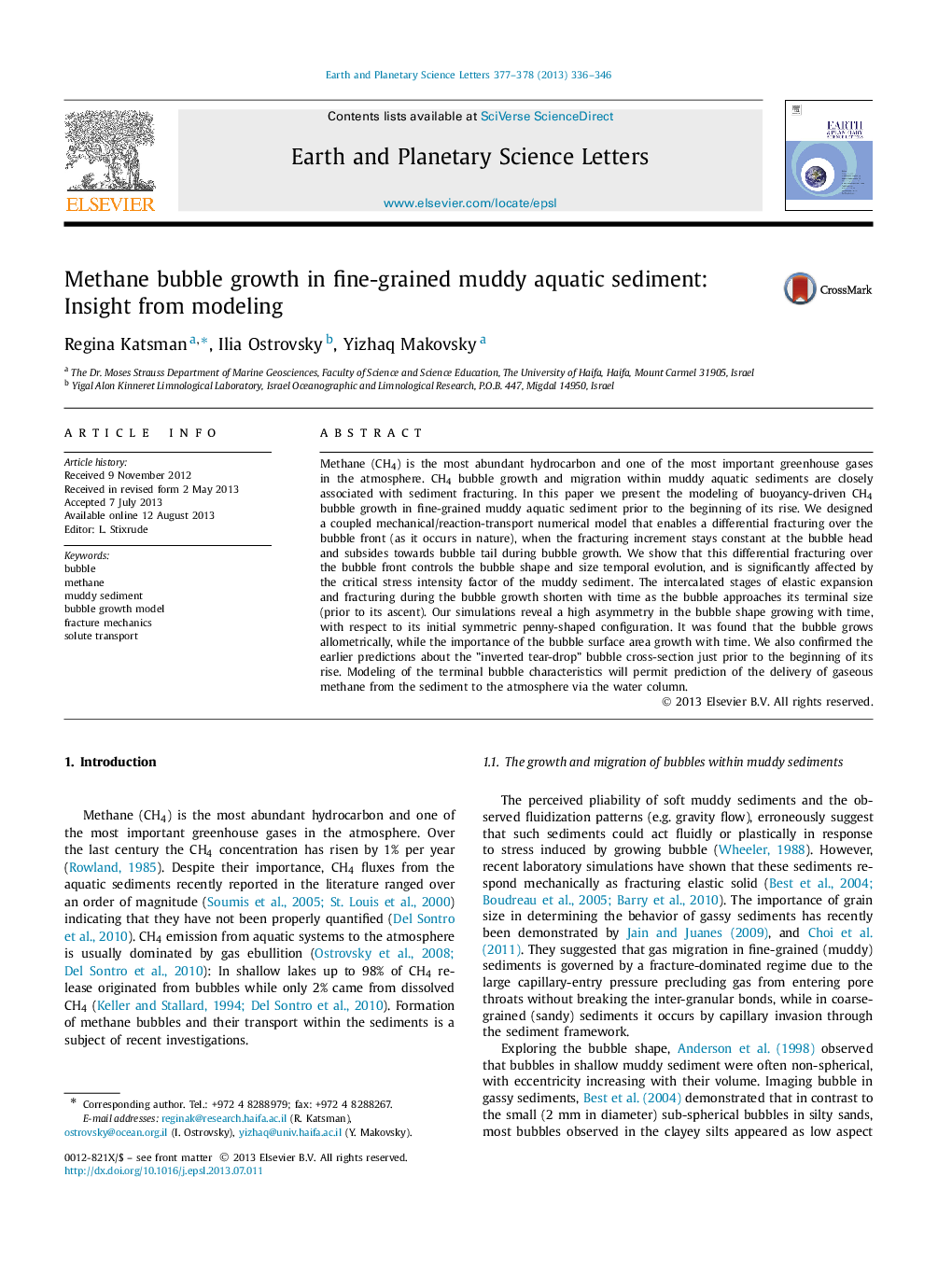| کد مقاله | کد نشریه | سال انتشار | مقاله انگلیسی | نسخه تمام متن |
|---|---|---|---|---|
| 6430040 | 1634778 | 2013 | 11 صفحه PDF | دانلود رایگان |
- We modeled the buoyancy-driven methane bubble growth in muddy sediment.
- Our model enables a differential fracturing over the bubble front.
- This fracturing controls the bubble shape and size temporal evolution.
- Our simulations reveal a high asymmetry in the bubble shape growing with time.
- The bubble follows allometric rather than isometric growth pattern.
Methane (CH4) is the most abundant hydrocarbon and one of the most important greenhouse gases in the atmosphere. CH4 bubble growth and migration within muddy aquatic sediments are closely associated with sediment fracturing. In this paper we present the modeling of buoyancy-driven CH4 bubble growth in fine-grained muddy aquatic sediment prior to the beginning of its rise. We designed a coupled mechanical/reaction-transport numerical model that enables a differential fracturing over the bubble front (as it occurs in nature), when the fracturing increment stays constant at the bubble head and subsides towards bubble tail during bubble growth. We show that this differential fracturing over the bubble front controls the bubble shape and size temporal evolution, and is significantly affected by the critical stress intensity factor of the muddy sediment. The intercalated stages of elastic expansion and fracturing during the bubble growth shorten with time as the bubble approaches its terminal size (prior to its ascent). Our simulations reveal a high asymmetry in the bubble shape growing with time, with respect to its initial symmetric penny-shaped configuration. It was found that the bubble grows allometrically, while the importance of the bubble surface area growth with time. We also confirmed the earlier predictions about the ”inverted tear-drop” bubble cross-section just prior to the beginning of its rise. Modeling of the terminal bubble characteristics will permit prediction of the delivery of gaseous methane from the sediment to the atmosphere via the water column.
Journal: Earth and Planetary Science Letters - Volumes 377â378, September 2013, Pages 336-346
